Add Users to ControlUp
- Print
- DarkLight
- PDF
Add Users to ControlUp
- Print
- DarkLight
- PDF
Article Summary
Share feedback
Thanks for sharing your feedback!
There are multiple ways to add users to ControlUp:
- If you use SAML, an account is automatically provisioned when a new user signs in to ControlUp with SSO. The user account is assigned the default user role for provisioned accounts, as well as the role assigned to the user's IdP group. Read SAML Single Sign-On for more details.
- You can manually invite a user by their email address. When a user accepts the invitation, they can create their account by using Azure or Google OAuth, or by creating a username and password. Read Manually invite users below for details.
Tip
You can control allowed login methods by going to Global Settings > Login Methods. Learn more.
How to invite users
To invite users to the DEX Platform:
- Go to Global Settings > User Settings > Invite Users.
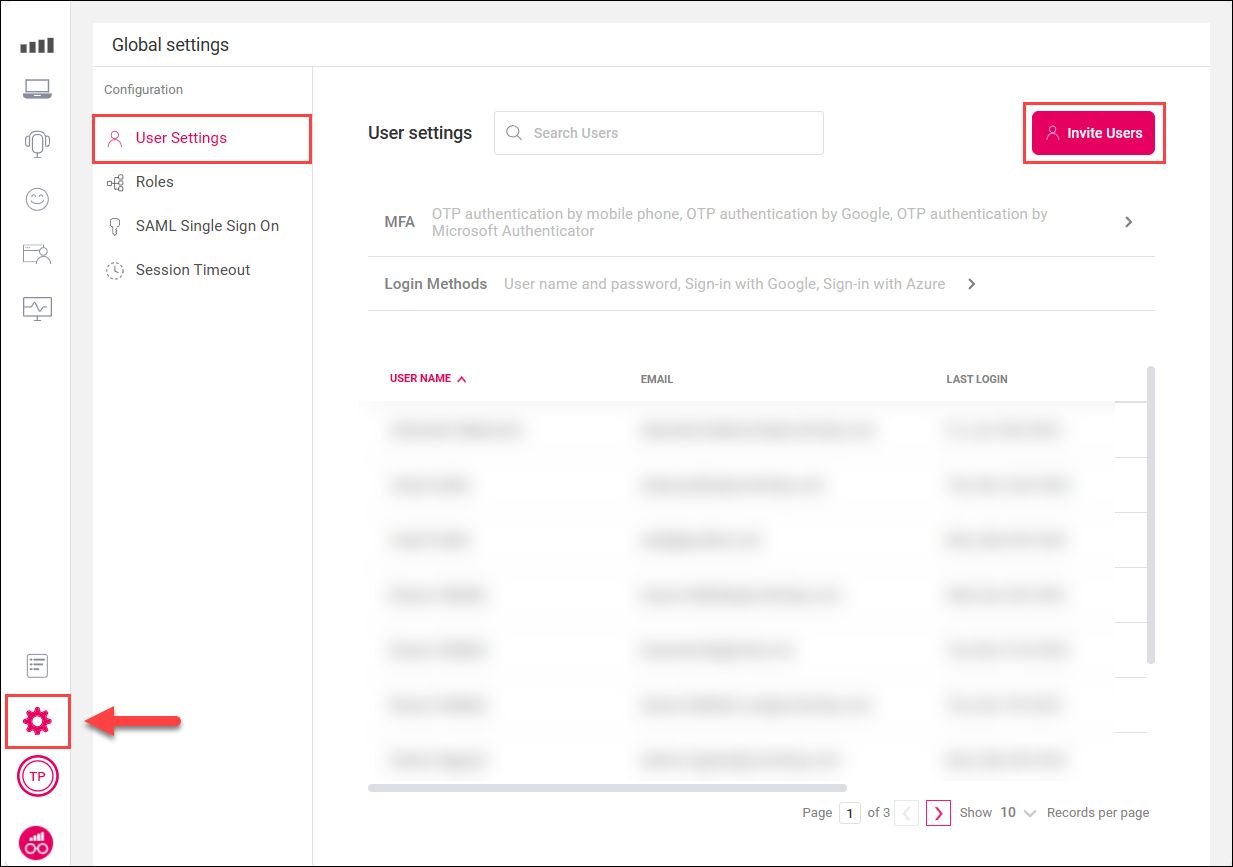
Select either Invite manually or Invite VDI users.
- If you select Invite manually, enter the Enter the email addresses of the users to invite and select a role for each user. You can add multiple email addresses on a single row, separated by a space or a semicolon. You can invite up to 100 users at a time.
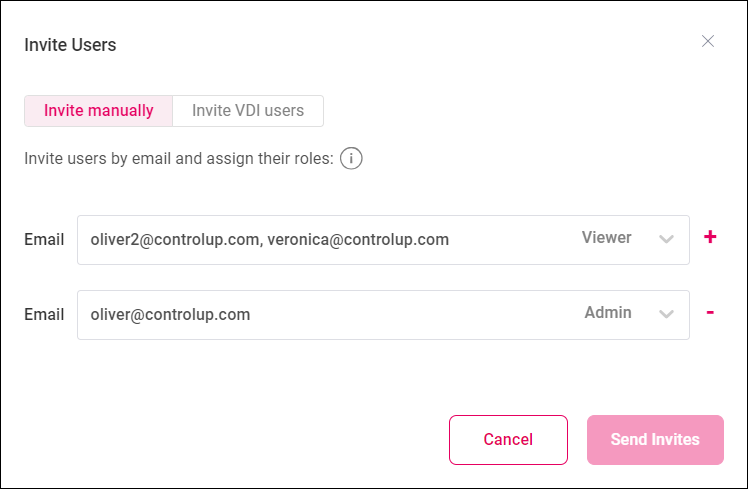
- If you select Invite VDI users, a list of all users who have signed into the Real-Time Console or Solve (our legacy web console) appears. You can select users from the list to invite and select their roles. This feature is useful if you previously had many people using the Real-Time Console or Solve, and want to invite them all to the DEX platform.
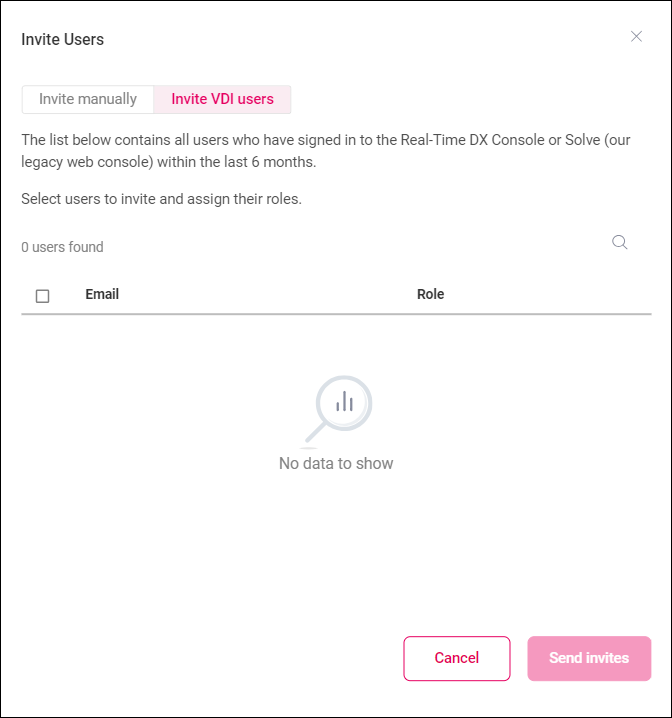
- If you select Invite manually, enter the Enter the email addresses of the users to invite and select a role for each user. You can add multiple email addresses on a single row, separated by a space or a semicolon. You can invite up to 100 users at a time.
Click Send Invites.
The invited users receive an email with a link to accept the invitation and sign up for their account using any of the allowed login methods for your organization. The invitation link is valid for 72 hours. A user's status changes from Pending to Active after they accept the invitiation.
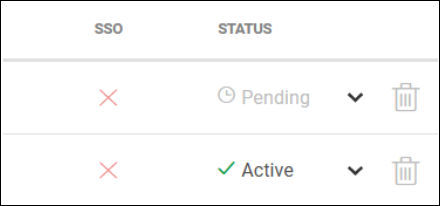
To resend the invitation link, click the arrow menu and select Resend Invite.
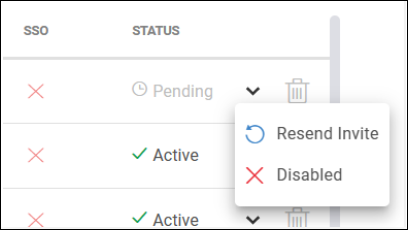
Was this article helpful?



